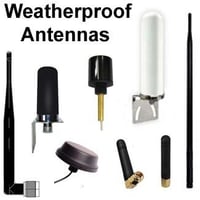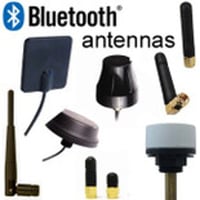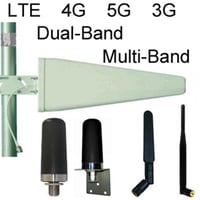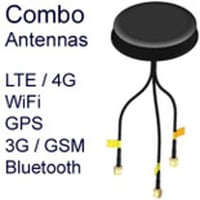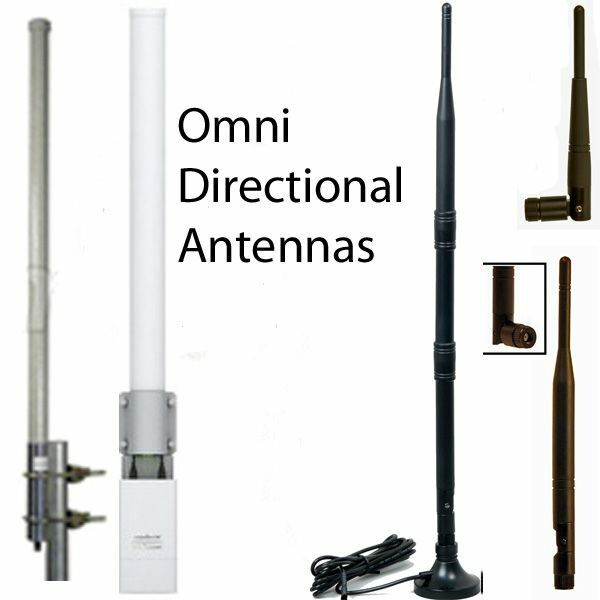Bandpass Filters
A band pass filter is a device for wireless signal processing that is designed to allow a specific range of frequencies to pass through while attenuating or blocking frequencies outside of that range. It effectively filters out unwanted frequencies and only permits signals within a specified frequency band to be transmitted or received.
If you need bandpass filters for a frequency other than those that we offer on this page, please let us know and we will add them to our product offerings.
Bandpass filters are essential tools in wireless applications because the selective filtering of specific frequency ranges is required or at least, very advantageous.
A typical bandpass filter has two main parameters:
-
Center Frequency (f0): This is the midpoint or central frequency within the desired passband. It defines the frequency around which the filter allows maximum signal transmission.
-
Bandwidth (BW): The bandwidth is the range of frequencies that the filter permits to pass through. It is usually specified as the difference between the upper and lower -3 dB cutoff frequencies (f1 and f2), where the signal power is reduced to half (-3 dB) of its maximum value. In other words, the bandwidth defines how wide the passband is.
Bandpass filters are commonly used in various wireless applications to select specific frequency bands of interest while attenuating unwanted frequencies. The choice of frequency bands for bandpass filters in wireless applications depends on the particular wireless communication standard or technology being used. Here are some common frequency bands and their associated wireless applications:
- 890 to 940 MHz band (915 MHz center frequency): Applications: LoRa, LoRaWAN, GSM
-
2.4 GHz ISM Band:
- Applications: Wi-Fi (802.11b/g/n/ac), Bluetooth, Zigbee, microwave ovens, industrial, scientific, and medical (ISM) devices.
- Filter Frequency: Bandpass filters in the 2.4 GHz range are used to isolate Wi-Fi or Bluetooth channels or to filter out interference from other devices in the ISM band.
-
5 GHz ISM Band:
- Applications: Wi-Fi (802.11a/n/ac/ax), radar systems, some satellite communication.
- Filter Frequency: Bandpass filters in the 5 GHz range are used for selecting specific Wi-Fi channels or filtering out interference.
-
Cellular Bands:
- Applications: 2G (GSM), 3G (UMTS), 4G (LTE), and 5G mobile networks.
- Filter Frequency: Bandpass filters are used in cellular base stations and mobile devices to isolate specific frequency bands allocated to cellular communication, such as 700 MHz, 850 MHz, 1.8 GHz, 2.1 GHz, 2.6 GHz, and others.
-
GPS and GNSS Bands:
- Applications: Global Positioning System (GPS), Global Navigation Satellite System (GNSS), such as Galileo, GLONASS, and Beidou.
- Filter Frequency: Bandpass filters are used to select the GPS or GNSS frequency bands (around 1.2 GHz and 1.5 GHz) and reject other signals to improve navigation accuracy.
-
Satellite Communication Bands:
- Applications: Satellite communication systems, both for uplink and downlink.
- Filter Frequency: Bandpass filters are used to isolate specific frequency bands allocated to satellite communication, such as C-band (3.7-4.2 GHz), Ku-band (11.7-12.7 GHz), and Ka-band (26.5-40 GHz).
-
Wireless Microphones and Audio Systems:
- Applications: Wireless microphones, wireless audio transmission systems.
- Filter Frequency: Bandpass filters are used to select specific frequency bands allocated for wireless audio transmission, such as VHF (Very High Frequency) and UHF (Ultra High Frequency) bands.
-
Radio and Television Broadcast Bands:
- Applications: AM (Amplitude Modulation) and FM (Frequency Modulation) radio, television broadcasting.
- Filter Frequency: Bandpass filters are used to isolate specific frequency bands for AM (around 540-1600 kHz) and FM (around 88-108 MHz) radio broadcasting.
These are just a few examples of the frequency bands where bandpass filters are used in wireless applications. The choice of the appropriate frequency band and filter design depends on the specific requirements of the wireless system and the standards it needs to adhere to.
Applications of bandpass filters for wireless and RF applications include:
-
Radio receivers: Bandpass filters help select specific radio frequency bands for tuning to different stations or channels.
-
Communication systems: Bandpass filters are used in modulators and demodulators to extract the carrier signal from a modulated waveform.
-
Signal processing: Bandpass filters can be employed in signal analysis to isolate specific frequency components of interest.
-
Medical devices: They are used in medical instruments like electrocardiograms (ECGs) and electroencephalograms (EEGs) to focus on specific physiological frequency components.
It's important to note that designing RF filters can be complex, and it often requires simulation tools and expertise in RF engineering. Depending on your specific needs, you may choose to design a custom filter or purchase a commercially available bandpass filter that meets your frequency and bandwidth requirements at 915 MHz. Commercial filters are often available with datasheets that provide detailed specifications, making them a convenient choice for many applications.
Bandpass filters can come in various designs, including active filters (using active components like operational amplifiers) and passive filters (using passive components like capacitors and inductors). They can be implemented as analog circuits or digital algorithms in signal processing.
To design or select a bandpass filter for 915 MHz, you'll need to consider several parameters:
-
Center Frequency (f0): The center frequency should be set to 915 MHz, as this is the frequency you want to pass through the filter.
-
Bandwidth (BW): The bandwidth of the filter will depend on your specific application. For ISM applications like LoRa, Sigfox, or other narrowband systems, the bandwidth may be relatively narrow, such as a few MHz or even less. For Wi-Fi or other broadband applications, the bandwidth may be wider, up to several hundred MHz.
-
Filter Type: There are various filter designs to choose from, such as Butterworth, Chebyshev, or elliptic filters. The choice depends on your specific requirements for filter characteristics like passband ripple, stopband attenuation, and steepness of rolloff.
-
Filter Order: The filter order determines how steeply the filter attenuates frequencies outside the passband. Higher-order filters provide better selectivity but may have a more complex design and require more components.
-
Impedance Matching: Ensure that the filter is impedance-matched to the input and output of your system to minimize signal reflection and maximize signal transfer.
-
Component Selection: Choose appropriate passive components (inductors, capacitors, and sometimes resistors) and active components (if using an active filter) with values that meet your design specifications.
-
Topology: Select the appropriate filter topology based on your requirements and the available components. Common topologies for RF filters include LC (inductor-capacitor), SAW (Surface Acoustic Wave), and ceramic filter.
In the context of wireless RF (Radio Frequency) applications, the term "bandpass filters" is more commonly used than "band pass filters."

